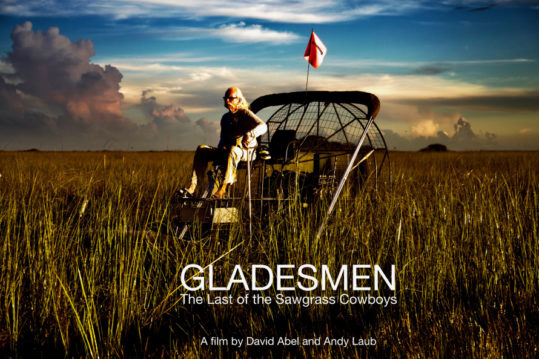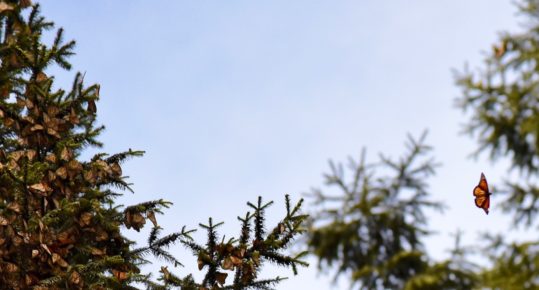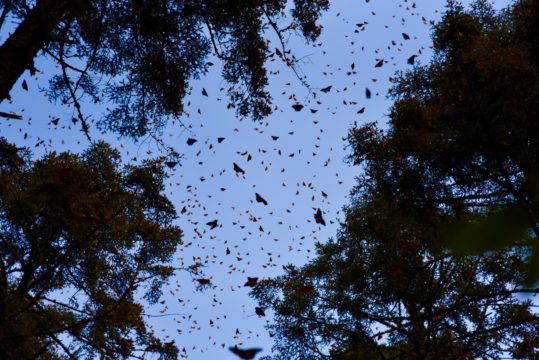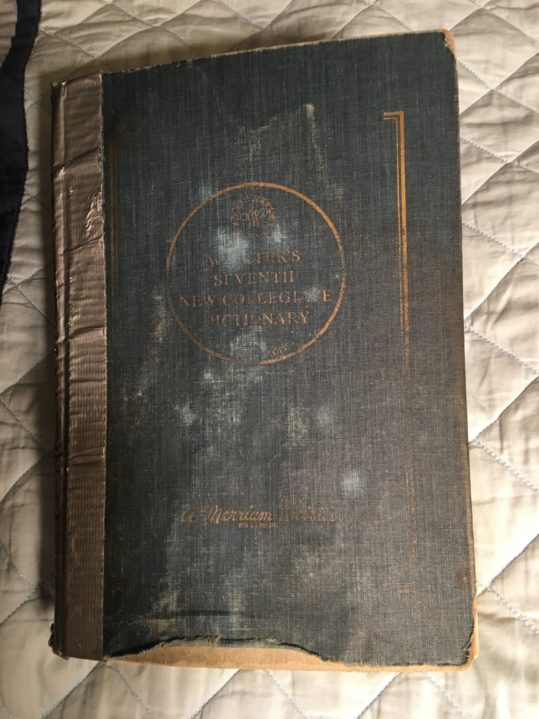Tags
"The Curious case of Sidd Finch", George Plimpton, New York Mets, Sidd Finch, Sports Illustrated"

He’s a pitcher, part yogi and part recluse. Impressively liberated from our opulent life-style, Sidd’s deciding about yoga—and his future in baseball.
In honor of Sports Illustrated’s 60th anniversary, SI.com is republishing, in full, 60 of the best stories ever to appear in the magazine. Today’s selection is “The Curious Case Of Sidd Finch,” by George Plimpton. It originally ran in the April 1, 1985 issue.
The secret cannot be kept much longer. Questions are being asked, and sooner rather than later the New York Mets management will have to produce a statement. It may have started unraveling in St. Petersburg, Fla. two weeks ago, on March 14, to be exact, when Mel Stottlemyre, the Met pitching coach, walked over to the 40-odd Met players doing their morning calisthenics at the Payson Field Complex not far from the Gulf of Mexico, a solitary figure among the pulsation of jumping jacks, and motioned three Mets to step out of the exercise. The three, all good prospects, were John Christensen, a 24-year-old outfielder; Dave Cochrane, a spare but muscular switch-hitting third baseman; and Lenny Dykstra, a swift centerfielder who may be the Mets’ lead-off man of the future.
Ordering the three to collect their bats and batting helmets, Stottlemyre led the players to the north end of the complex where a large canvas enclosure had been constructed two weeks before. The rumor was that some irrigation machinery was being installed in an underground pit.
Standing outside the enclosure, Stottlemyre explained what he wanted. “First of all,” the coach said, “the club’s got kind of a delicate situation here, and it would help if you kept reasonably quiet about it. O.K.?” The three nodded. Stottlemyre said, “We’ve got a young pitcher we’re looking at. We want to see what he’ll do with a batter standing in the box. We’ll do this alphabetically. John, go on in there, stand at the plate and give the pitcher a target. That’s all you have to do.”
“Do you want me to take a cut?” Christensen asked.
Stottlemyre produced a dry chuckle. “You can do anything you want.”

Christensen pulled aside a canvas flap and found himself inside a rectangular area about 90 feet long and 30 feet wide, open to the sky, with a home plate set in the ground just in front of him, and down at the far end a pitcher’s mound, with a small group of Met front-office personnel standing behind it, facing home plate. Christensen recognized Nelson Double-day, the owner of the Mets, and Frank Cashen, wearing a long-billed fishing cap. He had never seen Doubleday at the training facility before.
Christensen bats righthanded. As he stepped around the plate he nodded to Ronn Reynolds, the stocky reserve catcher who has been with the Met organization since 1980. Reynolds whispered up to him from his crouch, “Kid, you won’t believe what you’re about to see.”
A second flap down by the pitcher’s end was drawn open, and a tall, gawky player walked in and stepped up onto the pitcher’s mound. He was wearing a small, black fielder’s glove on his left hand and was holding a baseball in his right. Christensen had never seen him before. He had blue eyes, Christensen remembers, and a pale, youthful face, with facial muscles that were motionless, like a mask. “You notice it,” Christensen explained later, “when a pitcher’s jaw isn’t working on a chaw or a piece of gum.” Then to Christensen’s astonishment he saw that the pitcher, pawing at the dirt of the mound to get it smoothed out properly and to his liking, was wearing a heavy hiking boot on his right foot.
Christensen has since been persuaded to describe that first confrontation:
“I’m standing in there to give this guy a target, just waving the bat once or twice out over the plate. He starts his windup. He sways way back, like Juan Marichal, this hiking boot comes clomping over—I thought maybe he was wearing it for balance or something—and he suddenly rears upright like a catapult. The ball is launched from an arm completely straight up and stiff. Before you can blink, the ball is in the catcher’s mitt. You hear it crack, and then there’s this little bleat from Reynolds.”
Christensen said the motion reminded him of the extraordinary contortions that he remembered of Goofy’s pitching in one of Walt Disney’s cartoon classics.
“I never dreamed a baseball could be thrown that fast. The wrist must have a lot to do with it, and all that leverage. You can hardly see the blur of it as it goes by. As for hitting the thing, frankly, I just don’t think it’s humanly possible. You could send a blind man up there, and maybe he’d do better hitting at the sound of the thing.”
Christensen’s opinion was echoed by both Cochrane and Dykstra, who followed him into the enclosure. When each had done his stint, he emerged startled and awestruck.
Especially Dykstra. Offering a comparison for SI, he reported that out of curiosity he had once turned up the dials that control the motors of the pitching machine to maximum velocity, thus producing a pitch that went approximately 106 miles per hour. “What I looked at in there,” he said, motioning toward the enclosure, “was whistling by another third as fast, I swear.”

The phenomenon the three young batters faced, and about whom only Reynolds, Stottlemyre and a few members of the Mets’ front office know, is a 28-year-old, somewhat eccentric mystic named Hayden (Sidd) Finch. He may well change the course of baseball history. On St. Patrick’s Day, to make sure they were not all victims of a crazy hallucination, the Mets brought in a radar gun to measure the speed of Finch’s fastball. The model used was a JUGS Supergun II. It looks like a black space gun with a big snout, weighs about five pounds and is usually pointed at the pitcher from behind the catcher. A glass plate in the back of the gun shows the pitch’s velocity—accurate, so the manufacturer claims, to within plus or minus 1 mph. The figure at the top of the gauge is 200 mph. The fastest projectile ever measured by the JUGS (which is named after the oldtimer’s descriptive—the “jug-handled” curveball) was a Roscoe Tanner serve that registered 153 mph. The highest number that the JUGS had ever turned for a baseball was 103 mph, which it did, curiously, twice on one day, July 11, at the 1978 All-Star game when both Goose Gossage and Nolan Ryan threw the ball at that speed. On March 17, the gun was handled by Stottlemyre. He heard the pop of the ball in Reynolds’s mitt and the little squeak of pain from the catcher. Then the astonishing figure 168 appeared on the glass plate. Stottlemyre remembers whistling in amazement, and then he heard Reynolds say, “Don’t tell me, Mel, I don’t want to know….”
The Met front office is reluctant to talk about Finch. The fact is, they know very little about him. He has had no baseball career. Most of his life has been spent abroad, except for a short period at Harvard University.

The registrar’s office at Harvard will release no information about Finch except that in the spring of 1976 he withdrew from the college in midterm. The alumni records in Harvard’s Holyoke Center indicate slightly more. Finch spent his early childhood in a
an orphanage in Leicester, England and was adopted by a foster parent, the eminent archaeologist Francis Whyte-Finch, who was killed in an airplane crash while on an expedition in the Dhaulagiri mountain area of Nepal. At the time of the tragedy, Finch was in his last year at the Stowe School in Buckingham, England, from which he had been accepted into Harvard. Apparently, though, the boy decided to spend a year in the general area of the plane crash in the Himalayas (the plane was never actually found) before he returned to the West and entered Harvard in 1975, dropping for unknown reasons the “Whyte” from his name. Hayden Finch’s picture is not in the freshman yearbook. Nor, of course, did he play baseball at Harvard, having departed before the start of the spring season.
His assigned roommate was Henry W. Peterson, class of 1979, now a stockbroker in New York with Dean Witter, who saw very little of Finch. “He was almost never there,” Peterson told SI. “I’d wake up morning after morning and look across at his bed, which had a woven native carpet of some sort on it—I have an idea he told me it was made of yak fur—and never had the sense it had been slept in. Maybe he slept on the floor. Actually, my assumption was that he had a girl in Somerville or something, and stayed out there. He had almost no belongings. A knapsack. A bowl he kept in the corner on the floor. A couple of wool shirts, always very clean, and maybe a pair or so of blue jeans. One pair of hiking boots. I always had the feeling that he was very bright. He had a French horn in an old case. I don’t know much about French-horn music but he played beautifully. Sometimes he’d play it in the bath. He knew any number of languages. He was so adept at them that he’d be talking in English, which he spoke in this distinctive singsong way, quite Oriental, and he’d use a phrase like “pied-à-terre” and without knowing it he’d sail along in French for a while until he’d drop in a German word like “angst” and he’d shift to that language. For any kind of sustained conversation you had to hope he wasn’t going to use a foreign buzz word—especially out of the Eastern languages he knew, like Sanskrit—because that was the end of it as far as I was concerned.”

When Peterson was asked why he felt Finch had left Harvard, he shrugged his shoulders. “I came back one afternoon, and everything was gone—the little rug, the horn, the staff…. Did I tell you that he had this long kind of shepherd’s crook standing in the corner? Actually, there was so little stuff to begin with that it was hard to tell he wasn’t there anymore. He left a curious note on the floor. It turned out to be a Zen koan, which is one of those puzzles which cannot be solved by the intellect. It’s the famous one about the live goose in the bottle. How do you get the goose out of the bottle without hurting it or breaking the glass? The answer is, There, it’s out!’ I heard from him once, from Egypt. He sent pictures. He was on his way to Tibet to study.”
Finch’s entry into the world of baseball occurred last July in Old Orchard Beach, Maine, where the Mets’ AAA farm club, the Tidewater Tides, was in town playing the Guides. After the first game of the series, Bob Schaefer, the Tides’ manager, was strolling back to the hotel. He has very distinct memories of his first meeting with Finch: “I was walking by a park when suddenly this guy—nice-looking kid, clean-shaven, blue jeans, big boots—appears alongside. At first, I think maybe he wants an autograph or to chat about the game, but no, he scrabbles around in a kind of knapsack, gets out a scuffed-up baseball and a small, black leather fielder’s mitt that looks like it came out of the back of some Little League kid’s closet. This guy says to me, ‘I have learned the art of the pitch….’ Some odd phrase like that, delivered in a singsong voice, like a chant, kind of what you hear in a Chinese restaurant if there are some Chinese in there.

“I am about to hurry on to the hotel when this kid points out a soda bottle on top of a fence post about the same distance home plate is from the pitcher’s rubber. He rears way back, comes around and pops the ball at it. Out there on that fence post the soda bottle explodes. It disintegrates like a rifle bullet hit it—just little specks of vaporized glass in a puff. Beyond the post I could see the ball bouncing across the grass of the park until it stopped about as far away as I can hit a three-wood on a good day.
“I said, very calm, ‘Son, would you mind showing me that again?’
“And he did. He disappeared across the park to find the ball—it had gone so far, he was after it for what seemed 15 minutes. In the meantime I found a tin can from a trash container and set it up for him. He did it again—just kicked that can off the fence like it was hit with a baseball bat. It wasn’t the accuracy of the pitch so much that got to me but the speed. It was like the tin can got belted as soon as the ball left the guy’s fingertips. Instantaneous. I thought to myself, ‘My god, that kid’s thrown the ball about 150 mph. Nolan Ryan’s fastball is a change-up compared to what this kid just threw.’
“Well, what happens next is that we sit and talk, this kid and I, out there on the grass of the park. He sits with the big boots tucked under his legs, like one of those yoga guys, and he tells me he’s not sure he wants to play big league baseball, but he’d like to give it a try. He’s never played before, but he knows the rules, even the infield-fly rule, he tells me with a smile, and he knows he can throw a ball with complete accuracy and enormous velocity. He won’t tell me how he’s done this except that he ‘learned it in the mountains, in a place called Po, in Tibet.’ That is where he said he had learned to pitch…up in the mountains, flinging rocks and meditating. He told me his name was Hayden Finch, but he wanted to be called Sidd Finch. I said that most of the Sids we had in baseball came from Brooklyn. Or the Bronx. He said his Sidd came from ‘Siddhartha,’ which means ‘Aim Attained’ or ‘The Perfect Pitch.’ That’s what he had learned, how to throw the perfect pitch. O.K. by me, I told him, and that’s what I put on the scouting report, ‘Sidd Finch.’ And I mailed it in to the front office.”
The reaction in New York once the report arrived was one of complete disbelief. The assumption was that Schaefer was either playing a joke on his superiors or was sending in the figment of a very powerful wish-fulfillment dream. But Schaefer is one of the most respected men in the Met organization. Over the past seven years, the clubs he has managed have won six championships. Dave Johnson, the Met manager, phoned him. Schaefer verified what he had seen in Old Orchard Beach. He told Johnson that sometimes he, too, thought he’d had a dream, but he hoped the Mets would send Finch an invitation so that, at the very least, his own mind would be put at rest.
When a rookie is invited to training camp, he gets a packet of instructions in late January. The Mets sent off the usual literature to Finch at the address Schaefer had supplied them. To their surprise, Finch wrote back with a number of stipulations. He insisted he would report to the Mets camp in St. Petersburg only with the understanding that: 1) there were no contractual commitments; 2) during off-hours he be allowed to keep completely to himself; 3) he did not wish to be involved in any of the team drills or activities; 4) he would show the Mets his pitching prowess in privacy; 5) the whole operation in St. Petersburg was to be kept as secret as possible, with no press or photographs.
The reason for these requirements—he stated in a letter written (according to a source in the Met front office) in slightly stilted, formal and very polite terminology—was that he had not decided whether he actually wanted to play baseball. He wrote apologetically that there were mental adjustments to be made. He did not want to raise the Mets’ expectations, much less those of the fans, and then dash them. Therefore it was best if everything were carried on in secret or, as he put it in his letter, “in camera.”
At first, the inclination of the Met front office was to disregard this nonsense out of hand and tell Finch either to apply, himself, through normal procedures or forget it. But the extraordinary statistics in the scouting report and Schaefer’s verification of them were too intriguing to ignore. On Feb. 2, Finch’s terms were agreed to by letter. Mick McFadyen, the Mets’ groundskeeper in St. Petersburg, was ordered to build the canvas enclosure in a far corner of the Payson complex, complete with a pitcher’s mound and plate. Reynolds’s ordeal was about to start.

Reynolds is a sturdy, hardworking catcher (he has been described as looking like a high school football tackle). He has tried to be close-lipped about Finch, but his experiences inside the canvas enclosure have made it difficult for him to resist answering a few questions. He first heard about Finch from the Mets’ general manager. “Mr. Cashen called me into his office one day in early March,” Reynolds disclosed. “I was nervous because I thought I’d been traded. He was wearing a blue bow tie. He leaned across the desk and whispered to me that it was very likely I was going to be a part of baseball history. Big doings! The Mets had this rookie coming to camp and I was going to be his special catcher. All very hush-hush.
“Well, I hope nothing like that guy ever comes down the pike again. The first time I see him is inside the canvas coop, out there on the pitcher’s mound, a thin kid getting ready to throw, and I’m thinking he’ll want to toss a couple of warmup pitches. So I’m standing behind the plate without a mask, chest protector, pads or anything, holding my glove up, sort of half-assed, to give him a target to throw at…and suddenly I see this windup like a pretzel gone loony, and the next thing, I’ve been blown two or three feet back, and I’m sitting on the ground with the ball in my glove. My catching hand feels like it’s been hit with a sledgehammer.”
He was asked: “Does he throw a curveball? A slider? Or a sinker?”
Reynolds grinned and shook his head. “Good questions! Don’t ask me.”
“Does it make a sound?”
“Yeah, a little pft, pft-boom!”
Stottlemyre has been in direct charge of Finch’s pitching regimen. His own playing career ended in the spring of 1975 with a rotator-cuff injury, which makes him especially sensitive to the strain that a pitching motion can put on the arm. Although as close-lipped as the rest of the staff, Stottlemyre does admit that Finch has developed a completely revolutionary pitching style. He told SI: “I don’t understand the mechanics of it. Anyone who tries to throw the ball that way should fall flat on his back. But I’ve seen it. I’ve seen it a hundred times. It’s the most awesome thing that has ever happened in baseball.”
Asked what influences might have contributed to Finch’s style and speed, Stottlemyre said, “Well, cricket may have something to do with it. Finch has taken the power and speed of the running throw of the cricket bowler and has somehow harnessed all that energy to the pitching rubber. The wrist snap off that stiff arm is incredible. I haven’t talked to him but once or twice. I asked him if he ever thought of snapping the arm, like baseball pitchers, rather than the wrist: It would increase the velocity.
“He replied, very polite, you know, with a little bob of the head: ‘I undertake as a rule of training to refrain from injury to living things.’
“He’s right, of course. It’s Ronn Reynolds I feel sorry for. Every time that ball comes in, first you hear this smack sound of the ball driving into the pocket of the mitt, and then you hear this little gasp, this ai yee!—the catcher, poor guy, his whole body shakin’ like an angina’s hit it. It’s the most piteous thing I’ve ever heard, short of a trapped rabbit.”
Hayden (Sidd) Finch arrived in St. Petersburg on Feb. 7. Most of the rookies and minor-leaguers stay at the Edgewater Beach Inn. Assuming that Finch would check in with the rest of the early arrivals, the Mets were surprised when he telephoned and announced that he had leased a room in a small boarding-house just off Florida Avenue near a body of water on the bay side called Big Bayou. Because his private pitching compound had been constructed across the city and Finch does not drive, the Mets assigned him a driver, a young Tampa Bay resident, Eliot Posner, who picks him up in the morning and returns him to Florida Avenue or, more often, to a beach on the Gulf where, Posner reports, Finch, still in his baseball outfit and carrying his decrepit glove, walks down to the water’s edge and, motionless, stares out at the windsurfers. Inevitably, he dismisses Posner and gets back to his boardinghouse on his own.

The Met management has found out very little about his life in St. Petersburg. Mrs. Roy Butterfield, his landlady, reports (as one might expect) that “he lives very simply. Sometimes he comes in the front door, sometimes the back. Sometimes I’m not even sure he spends the night. I think he sleeps on the floor—his bed is always neat as a pin. He has his own rug, a small little thing. I never have had a boarder who brought his own rug. He has a soup bowl. Not much, is what I say. Of course, he plays the French horn. He plays it very beautifully and, thank goodness, softly. The notes fill the house. Sometimes I think the notes are coming out of my television set.”
Probably the member of the Met staff who has gotten the closest to Finch is Posner. When Posner returns to the Payson complex, inevitably someone rushes out from the Mets’ offices asking, “Did he say anything? What did he say?”
Posner takes out a notebook.
“Today he said, ‘When your mind is empty like a canyon you will know the power of the Way.’ ”
“Anything else?”
“No.”
While somewhat taxed by Finch’s obvious eccentricities, and with the exception of the obvious burden on the catchers, the Mets, it seems, have an extraordinary property in their camp. But the problem is that no one is sure if Finch really wants to play. He has yet to make up his mind; his only appearances are in the canvas enclosure. Reynolds moans in despair when he is told Finch has arrived. Sometimes his ordeal is short-lived. After Finch nods politely at Reynolds and calls down “Namas-te!” (which means “greetings” in Sanskrit), he throws only four or five of the terrifying pitches before, with a gentle smile, he announces “Namas-te!” (it also means “farewell”) and gets into the car to be driven away.
One curious manifestation of Finch’s reluctance to commit himself entirely to baseball has been his refusal to wear a complete baseball uniform. Because he changes in his rooming house, no one is quite sure what he will be wearing when he steps through the canvas flap into the enclosure. One afternoon he turned up sporting a tie hanging down over the logo on his jersey, and occasionally—as Christensen noticed—he wears a hiking boot on his right foot. Always, he wears his baseball cap back to front—the conjecture among the Met officials is that this sartorial behavior is an indication of his ambivalence about baseball.

In hopes of understanding more about him, in early March the Mets called in a specialist in Eastern religions, Dr. Timothy Burns, the author of, among other treatises, Satori, or Four Years in a Tibetan Lamasery. Not allowed to speak personally with Finch for fear of “spooking him,” Burns was able only to speculate about the Mets’ newest player.
According to sources from within the Met organization, Burns told a meeting of the club’s top brass that the strange ballplayer in their midst was very likely a trapas, or aspirant monk.
A groan is said to have gone up from Nelson Doubleday. Burns said that Finch was almost surely a disciple of Tibet’s great poet-saint Lama Milaraspa, who was born in the 11th century and died in the shadow of Mount Everest. Burns told them that Milaraspa was a great yogi who could manifest an astonishing phenomenon: He could produce “internal heat,” which allowed him to survive snowstorms and intense cold, wearing only a thin robe of white cotton. Finch does something similar—an apparent deflection of the huge forces of the universe into throwing a baseball with bewildering accuracy and speed through the process of siddhi, namely the yogic mastery of mind-body. He mentioned that The Book of Changes, the I Ching, suggests that all acts (even throwing a baseball) are connected with the highest spiritual yearnings. Utilizing the Tantric principle of body and mind, Finch has decided to pitch baseballs—at least for a while.
The Mets pressed Burns. Was there any chance that Finch would come to his senses and commit himself to baseball?
“There’s a chance,” Burns told them. “You will remember that the Buddha himself, after what is called the Great Renunciation, finally realized that even in the most severe austerities—though he conquered lust and fear and acquired a great deal of self-knowledge—truth itself could not necessarily be found. So after fasting for six years he decided to eat again.”
Reached by SI at the University of Maryland, where he was lecturing last week, Burns was less sanguine. “The biggest problem Finch has with baseball,” he said over the phone, “is that nirvana, which is the state all Buddhists wish to reach, means literally ‘the blowing out’—specifically the purifying of oneself of greed, hatred and delusion. Baseball,” Burns went on, “is symbolized to a remarkable degree by those very three aspects: greed (huge money contracts, stealing second base, robbing a guy of a base hit, charging for a seat behind an iron pillar, etc.), hatred (players despising management, pitchers hating hitters, the Cubs detesting the Mets, etc.) and delusion (the slider, the pitchout, the hidden-ball trick and so forth). So you can see why it is not easy for Finch to give himself up to a way of life so opposite to what he has been led to cherish.”
Burns is more puzzled by Finch’s absorption with the French horn. He suspects that in Tibet Finch may have learned to play the rkang-gling, a Tibetan horn made of human thighbones, or perhaps even the Tibetan long trumpet, the dung-chen, whose sonorous bellowing in those vast Himalayan defiles is somewhat echoed in the lower registers of the French horn.

The Met inner circle believes that Finch’s problem may be that he cannot decide between baseball and a career as a horn player. In early March the club contacted Bob Johnson, who plays the horn and is the artistic director of the distinguished New York Philomusica ensemble, and asked him to come to St. Petersburg. Johnson was asked to make a clandestine assessment of Finch’s ability as a horn player and, even more important, to make contact with him. The idea was that, while praising him for the quality of his horn playing, Johnson should try to persuade him that the lot of a French-horn player (even a very fine one) was not an especially gainful one. Perhaps that would tip the scales in favor of baseball.
Johnson came down to St. Petersburg and hung around Florida Avenue for a week. He reported later to SI: “I was being paid for it, so it wasn’t bad. I spent a lot of time looking up, so I’d get a nice suntan. Every once in a while I saw Finch coming in and out of the rooming house, dressed to play baseball and carrying a funny-looking black glove. Then one night I heard the French horn. He was playing it in his room. I have heard many great horn players in my career—Bruno Jaenicke, who played for Toscanini; Dennis Brain, the great British virtuoso; Anton Horner of the Philadelphia Orchestra—and I would say Finch was on a par with them. He was playing Benjamin Britten’s Serenade, for tenor horn and strings—a haunting, tender piece that provides great space for the player—when suddenly he produced a big, evocative bwong sound that seemed to shiver the leaves of the trees. Then he shifted to the rondo theme from the trio for violin, piano and horn by Brahms—just sensational. It may have had something to do with the Florida evening and a mild wind coming in over Big Bayou and tree frogs, but it was remarkable. I told this to the Mets, and they immediately sent me home—presuming, I guess, that I was going to hire the guy. That’s not so farfetched. He can play for the Philomusica anytime.”
Meanwhile, the Mets are trying other ways to get Finch into a more positive frame of mind about baseball. Inquiries among American lamaseries (there are more than 100 Buddhist societies in the U.S.) have been quietly initiated in the hope of finding monks or priests who are serious baseball fans and who might persuade Finch that the two religions (Buddhism and baseball) are compatible. One plan is to get him into a movie theater to see The Natural, the mystical film about baseball, starring Robert Redford. Another film suggested is the baseball classic It Happens Every Spring, starring Ray Milland as a chemist who, by chance, discovers a compound that avoids wood; when applied to a baseball in the film, it makes Milland as effective a pitcher as Finch is in real life.
Conversations with Finch himself have apparently been exercises in futility. All conventional inducements—huge contracts, advertising tie-ins, the banquet circuit, ticker-tape parades, having his picture on a Topps bubble-gum card, chatting on Kiner’s Korner (the Mets’ postgame TV show) and so forth—mean little to him. As do the perks (“You are very kind to offer me a Suzuki motorcycle, but I cannot drive”). He has very politely declined whatever overtures the Mets have offered. The struggle is an absolutely internal one. He will resolve it. Last week he announced that he would let the management know what he was going to do on or around April 1.

Met manager Davey Johnson has seen Finch throw about half a dozen pitches. He was impressed (“If he didn’t have this great control, he’d be like the Terminator out there. Hell, that fastball, if off-target on the inside, would carry a batter’s kneecap back into the catcher’s mitt”), but he is leaving the situation to the front office. “I can handle the pitching rotation; let them handle the monk.” He has had one meeting with Finch. “I was going to ask him if we could at least give him a decent fielder’s mitt. I asked him why he was so attached to the piece of rag he was using. ‘It is,’ the guy told me, ‘the only one I have.’ Actually, I don’t see why he needs a better one. All he will ever need it for is to catch the ball for the next pitch. So then I said to him, ‘There’s only one thing I can offer you, Finch, and that’s a fair shake.’ ”
According to Jay Horwitz, the Mets’ public-relations man, Finch smiled at the offer of the fair shake and nodded his head politely—perhaps because it was the only nonmaterial offer made. It did not encroach on Finch’s ideas about the renunciation of worldly goods. It was an ingenious, if perhaps unintentional, move on the manager’s part.
Nelson Doubleday is especially hopeful about Finch’s ultimate decision. “I think we’ll bring him around,” he said a few days ago. “After all, the guy’s not a nut, he’s a Harvard man.”
In the meantime, the Mets can only wait. Finch periodically turns up at the enclosure. Reynolds is summoned. There are no drills. Sometimes Finch throws for five minutes, instantly at top speed, often for half an hour. Then he leaves. Security around the enclosure has been tight. Since Finch has not signed with the Mets, he is technically a free agent and a potential find for another club. The curious, even Met players, are politely shooed away from the Payson Field enclosure. So far Finch’s only association with Met players (other than Reynolds) has been the brief confrontation with Christensen, Cochrane and Dykstra when the front office nervously decided to test his control with a batter standing in the box. If he decides to play baseball, he will leave his private world of the canvas enclosure and join manager Johnson and the rest of the squad. For the first time Gary Carter, the Mets’ regular catcher, will face the smoke of the Finch pitch, and the other pitchers will stand around and gawk. The press will have a field day (“How do you spell Siddhartha? How do you grip the ball? How do you keep your balance on the mound?”). The Mets will try to protect him from the glare and help him through the most traumatic of culture shocks, praying that in the process he will not revert and one day disappear.
Actually, the presence of Hayden (Sidd) Finch in the Mets’ training camp raises a number of interesting questions. Suppose the Mets (and Finch himself) can assuage and resolve his mental reservations about playing baseball; suppose he is signed to a contract (one wonders what an ascetic whose major possessions are a bowl, a small rug, a long stick and a French horn might demand); and suppose he comes to New York’s Shea Stadium to open the season against the St. Louis Cardinals on April 9. It does not matter that he has never taken a fielding drill with his teammates. Presumably he will mow down the opposition in a perfect game. Perhaps Willie McGee will get a foul tip. Suppose Johnson discovers that the extraordinary symbiotic relationship of mind and matter is indefatigable—that Finch can pitch day after day at this blinding, unhittable speed. What will happen to Dwight Gooden? Will Carter and the backup catchers last the season? What will it do to major league baseball as it is known today?
Peter Ueberroth, baseball’s new commissioner, was contacted by SI in his New York office. He was asked if he had heard anything about the Mets’ new phenomenon.
No, he had not. He had heard some rumors about the Mets’ camp this spring, but nothing specific.
Did the name Hayden (Sidd) Finch mean anything to him?
Nope.
The commissioner was told that the Mets had a kid who could throw the ball over 150 mph. Unhittable.
Ueberroth took a minute before he asked, “Roll that by me again?”
He was told in as much detail as could be provided about what was going on within the canvas enclosure of the Pay-son compound. It was possible that an absolute superpitcher was coming into baseball—so remarkable that the delicate balance between pitcher and batter could be turned into disarray. What was baseball going to do about it?
“Well, before any decisions, I’ll tell you something,” the commissioner finally said, echoing what may very well be a nationwide sentiment this coming season. “I’ll have to see it to believe it!”




















